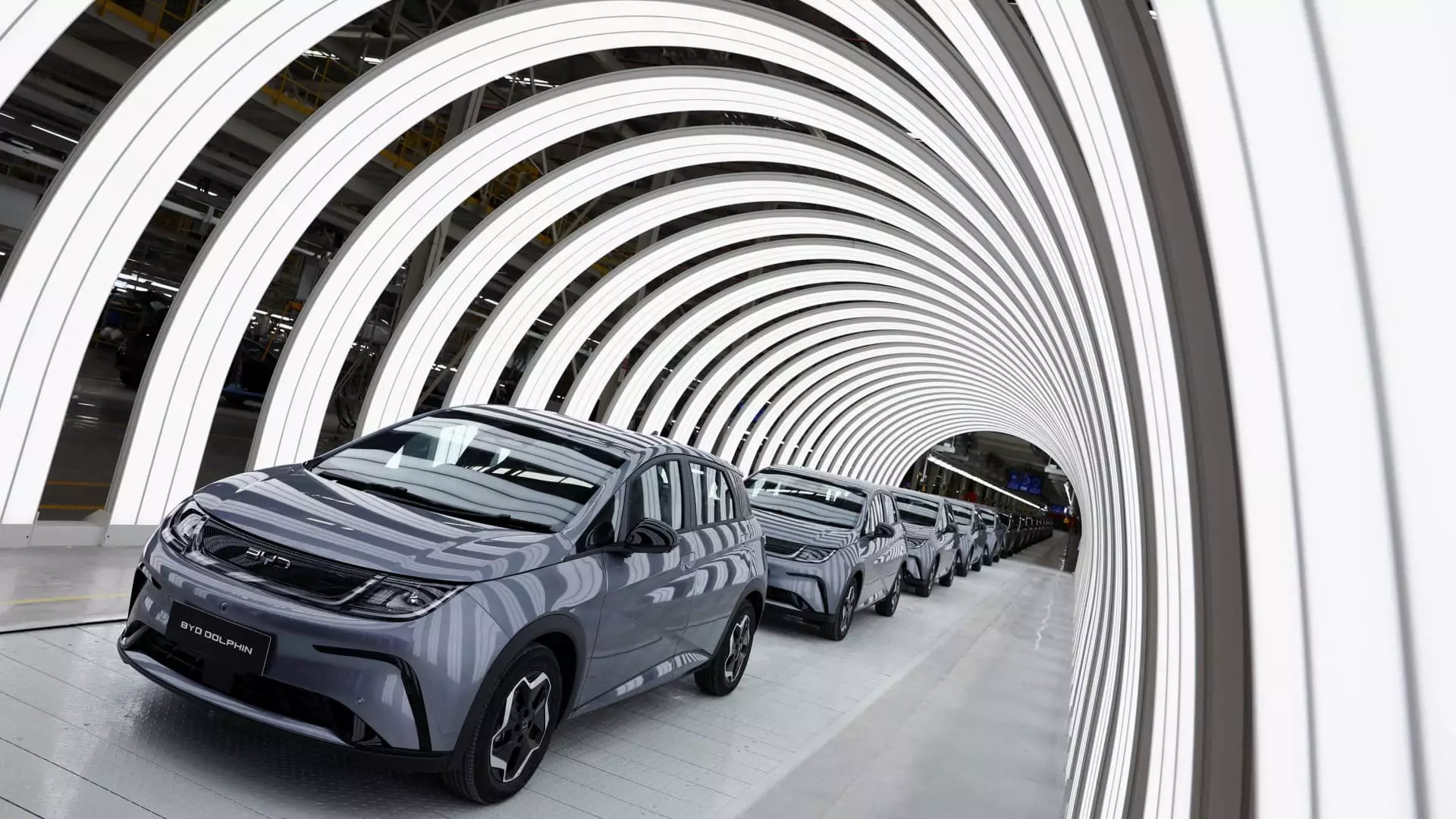In a bold move to solidify its presence in the electric vehicle (EV) market, BYD, the Chinese automotive powerhouse, has recently unveiled its latest advancements in driver-assistance technologies. With shares reaching unprecedented heights, this initiative signifies not only BYD’s commitment to innovation but also hints at a broader shift in the automotive industry, particularly within China. The introduction of an advanced driver-assistance system across its fleet—including budget-friendly models under 70,000 yuan (approximately $9,600)—underlines the company’s strategy to democratize cutting-edge automotive technology.
Strategic Collaborations and AI Integration
A defining feature of BYD’s new system is the integration of DeepSeek’s artificial intelligence capabilities. This partnership highlights a crucial trend: the merging of automotive engineering with AI, marking a pivotal step toward autonomous driving. Analysts from Nomura observed that suppliers for these advanced driver-assistive components are set to thrive alongside BYD’s technological push, projecting solid growth for firms providing essential parts for this new system. This aligns with the broader narrative in the automotive market where manufacturers are racing to elevate their smart driving functionalities.
Analysts expect a ripple effect as other automakers follow BYD’s lead, investing in smart driving technologies to remain competitive. This scenario is significant given the saturation of the Chinese EV market, where innovative features can set brands apart.
As demand escalates for sophisticated driver-assistance systems, businesses like BYD Electronics, Horizon Robotics, and Hesai Tech stand to gain immensely. BYD Electronics, listed in Hong Kong, is a principal player in developing autonomous driving components. Horizon Robotics, which is crucial for chip production, is also expected to ride this wave of demand, particularly through its new Journey 6 chipset series. Goldman Sachs analysts have optimistically raised their price predictions for both Horizon Robotics and BYD Electronics, anticipating substantial revenue increases driven by an influx of cars adopting advanced driver-assistance systems.
The growing integration of lidar technology—which utilizes lasers to create a detailed 3D environment map—further exemplifies BYD’s commitment to enhancing the safety and efficiency of its vehicles. With strategic investments in key technologies, BYD is positioning itself not just as a manufacturer, but as a tech innovator within the automotive space.
BYD’s advances in driver-assistance systems pose a clear challenge to competitors like Tesla, especially given Tesla’s current struggles in securing necessary approvals for its Full Self-Driving feature within China. The recent surge in BYD’s stock values contrasted sharply with Tesla’s decline, illustrating how competitive dynamics shift rapidly in response to technological developments. As Chinese authorities emphasize domestic technological advancement, companies like BYD are seizing the opportunity to bolster their market share against international competitors.
Moreover, BYD’s focus on the domestic market rather than its export performance underscores a strategic shift that aligns with Chinese governmental objectives to enhance local technological capabilities amid U.S. restrictions.
The Future of Smart Driving Technology
The automotive industry’s landscape is undeniably evolving, with smart driving technologies being pivotal in shaping future consumer preferences. Analysts predict that BYD could see the installation of over 3 million vehicles equipped with their advanced driver-assistance systems within the year. The financial implications are substantial, as the high costs associated with these systems—over conventional components—could significantly boost revenue streams for BYD and its partners.
As car manufacturers pivot towards incorporating more capable smart driving features into reasonably priced vehicles, industry players are finding fertile ground for investment and growth. The emphasis on models that utilize cutting-edge technology may ultimately redefine consumer expectations concerning safety, reliability, and cost.
BYD’s assertive foray into driver-assistance systems not only enriches its vehicle lineup but also sets a new standard within the automotive landscape in China. As it embarks on this innovation-focused path, the expected growth trajectory of its partners illustrates the industry’s interconnected nature. The emphasis on driver-assistance features signifies that the frontier of electric vehicles is not merely about electrification but about enriching the driving experience through intelligent technologies.
In essence, the automotive sector is on the cusp of a transformative era where advancements in driver-assistance systems will shape vehicles to be smarter, safer, and more integrated into consumers’ lives. With BYD leading the charge, it is clear that the road ahead will be paved with innovation and opportunity.

